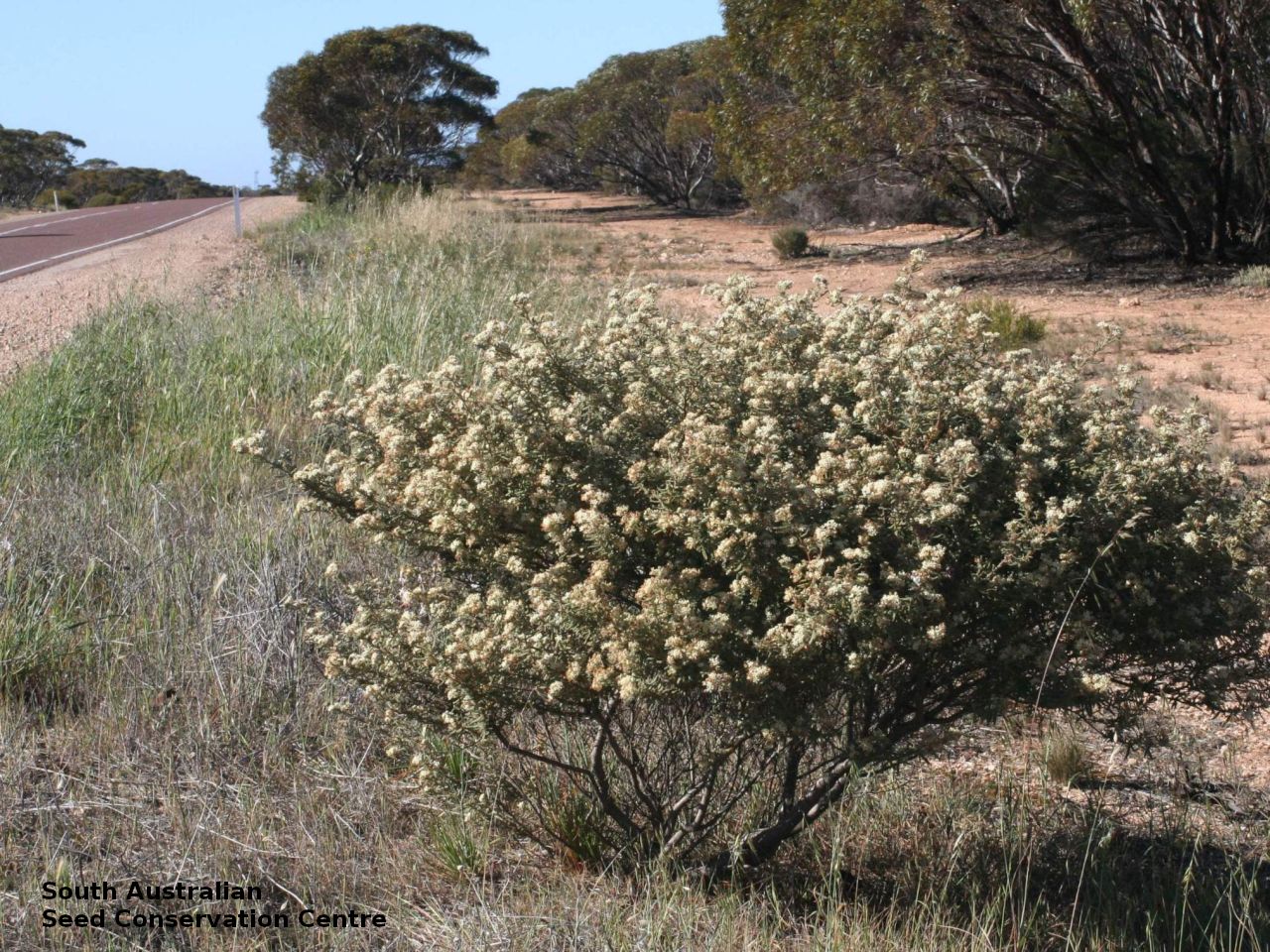
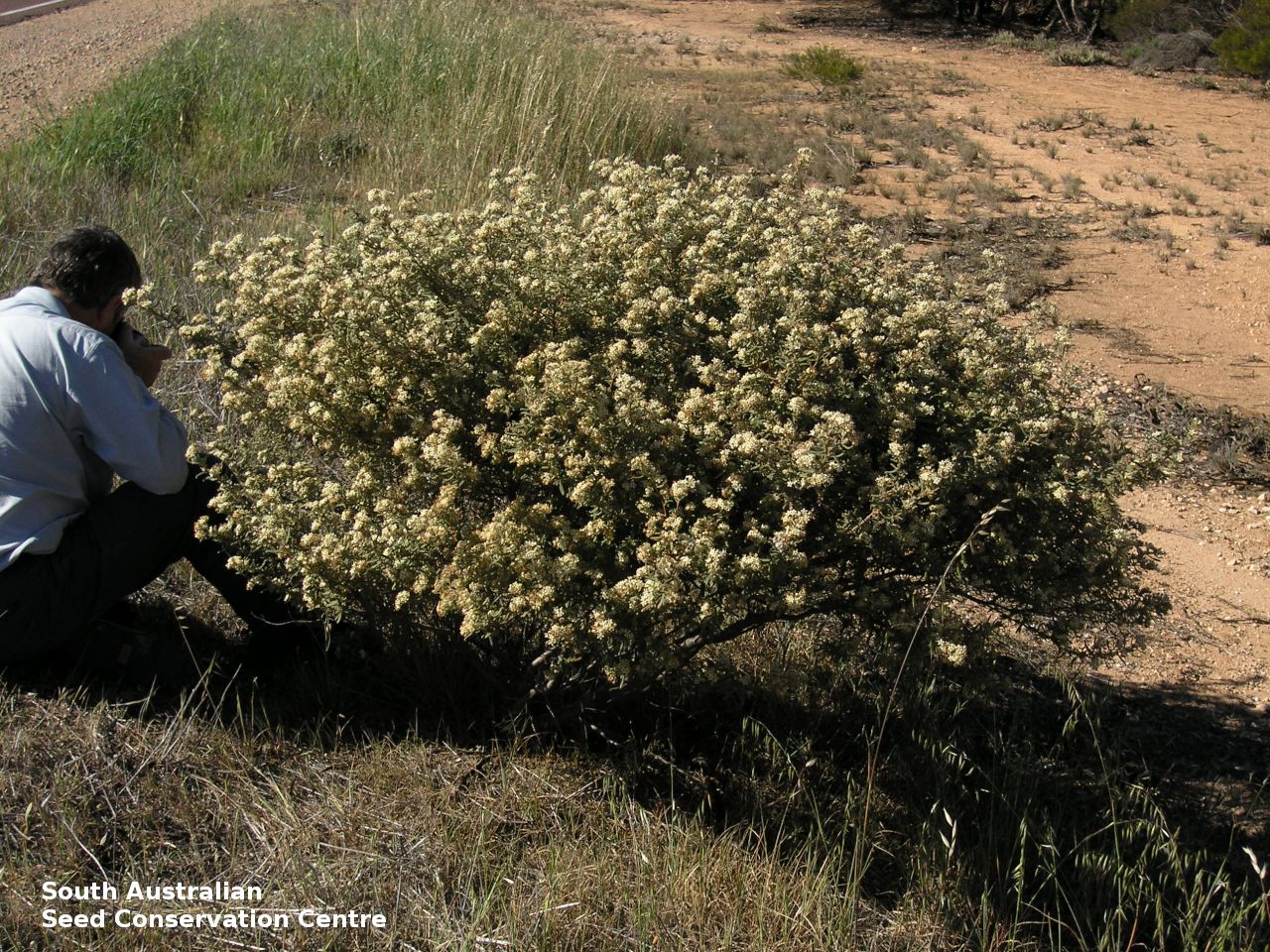
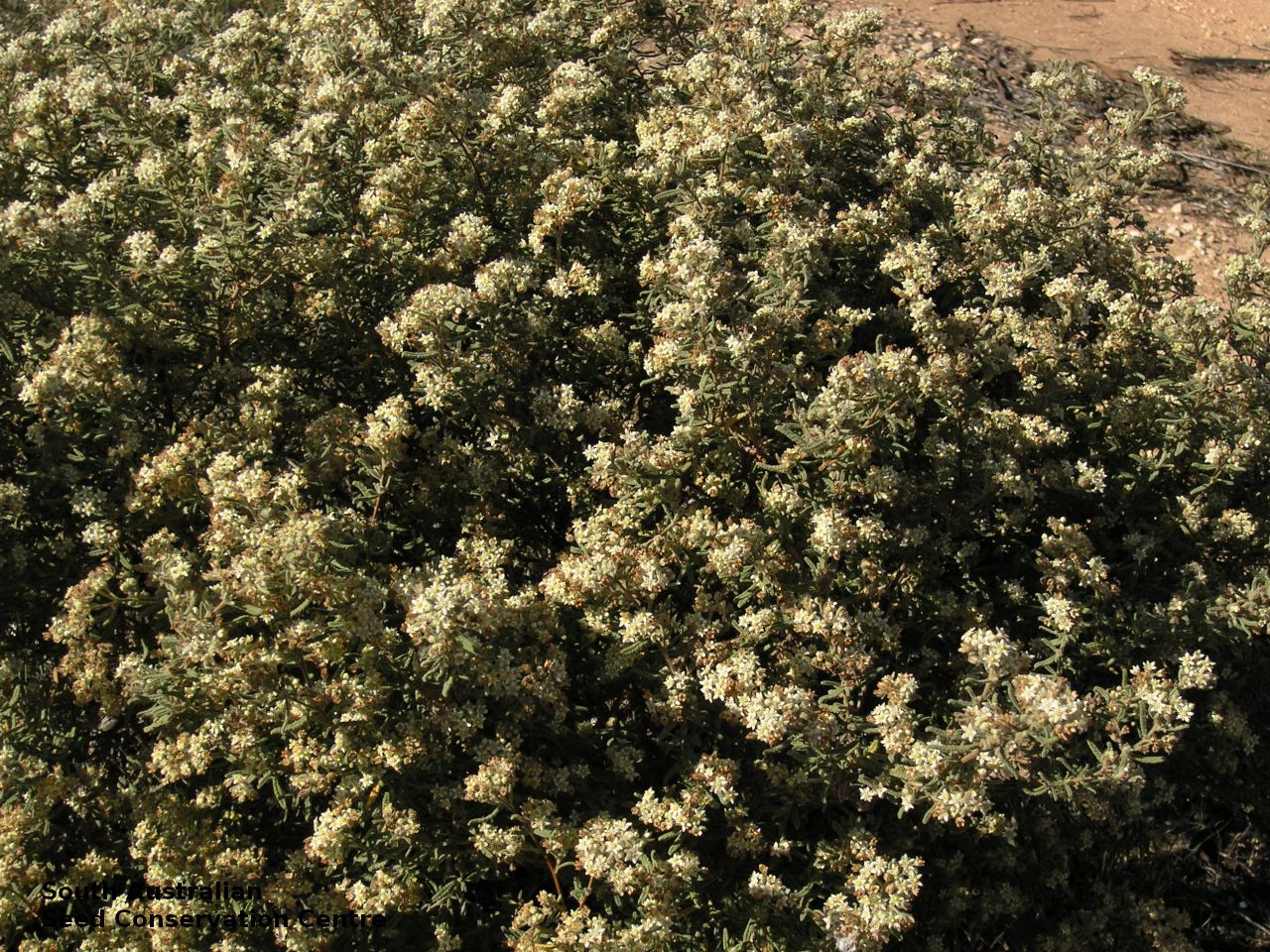
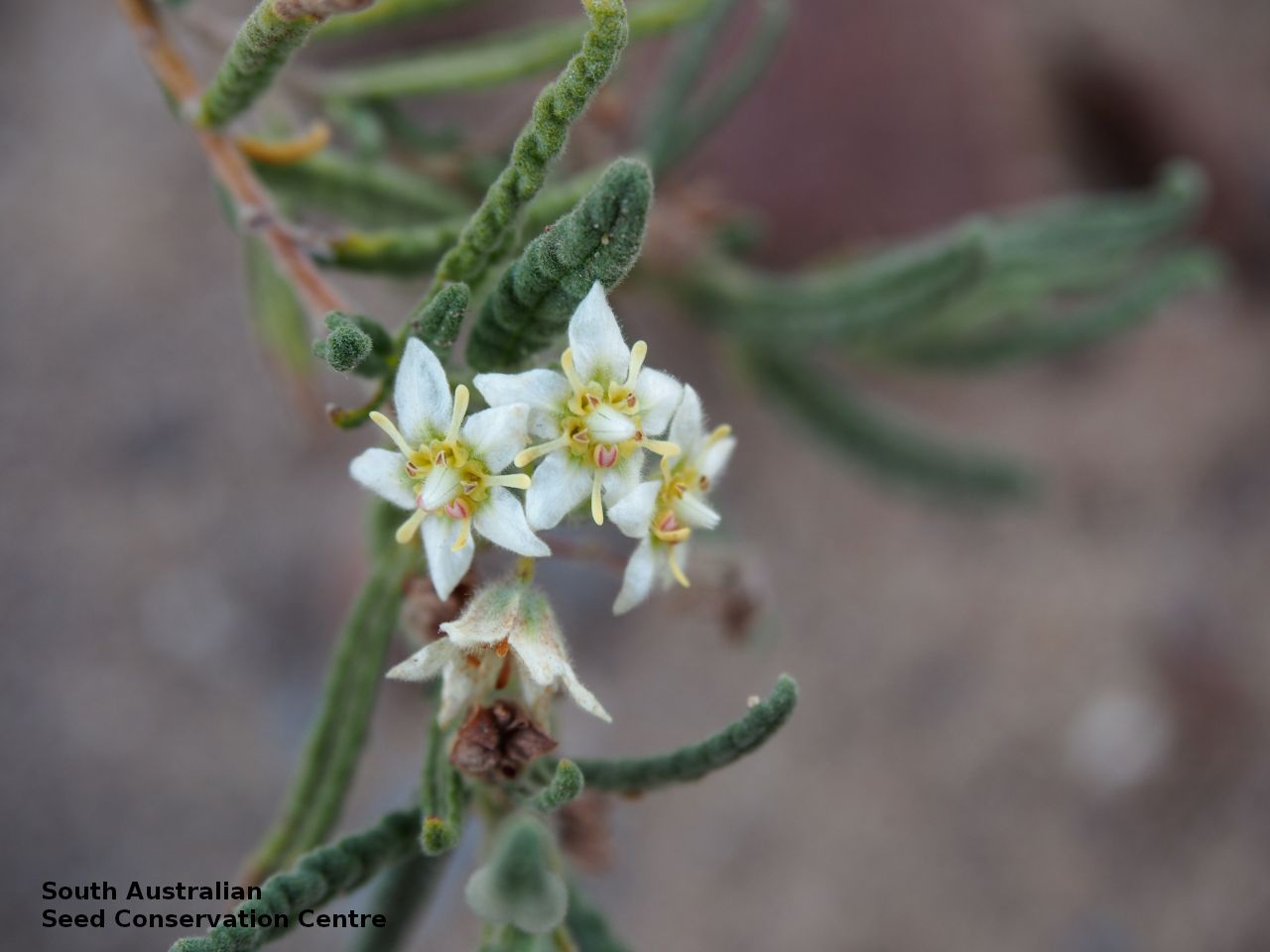
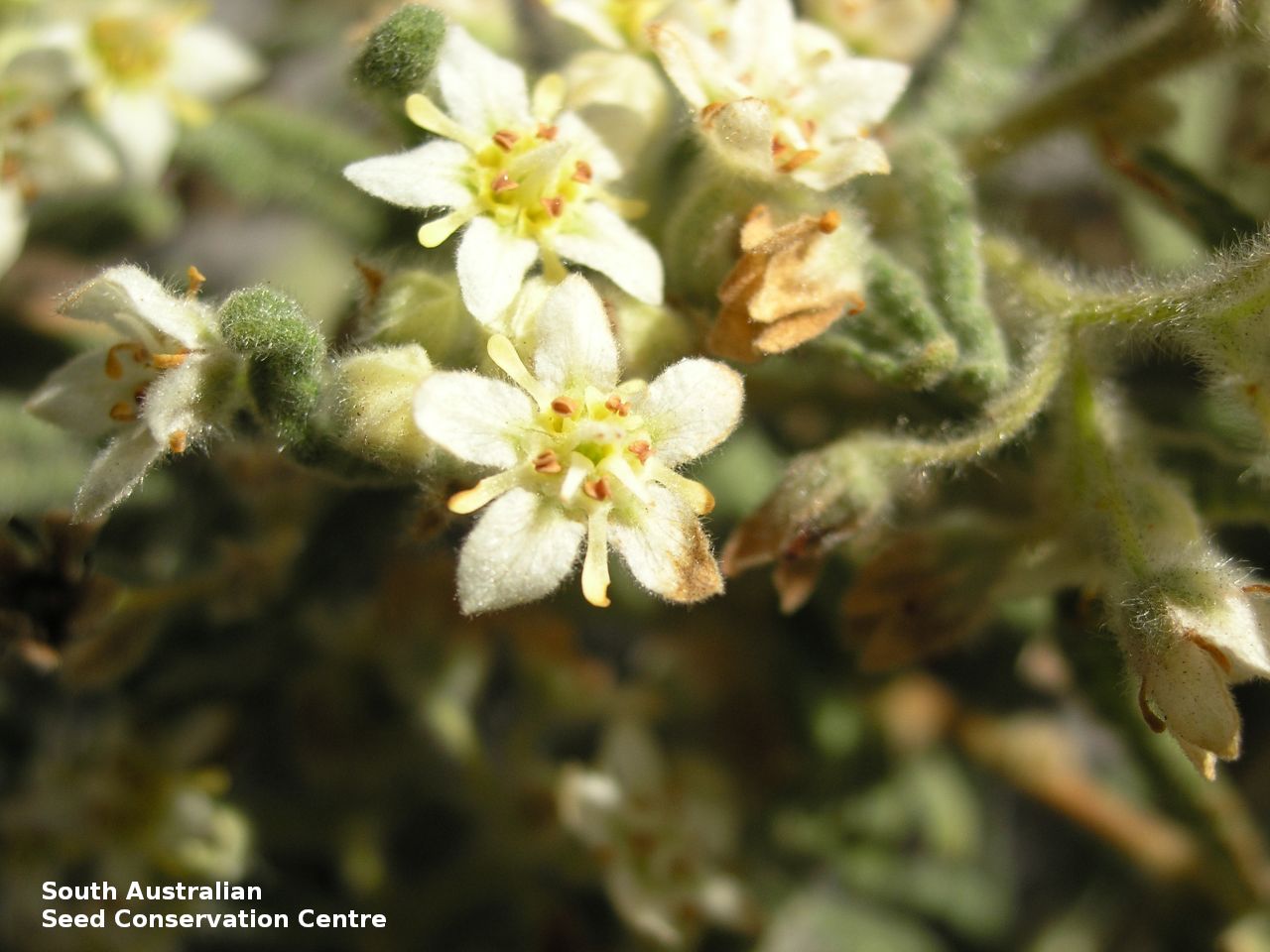
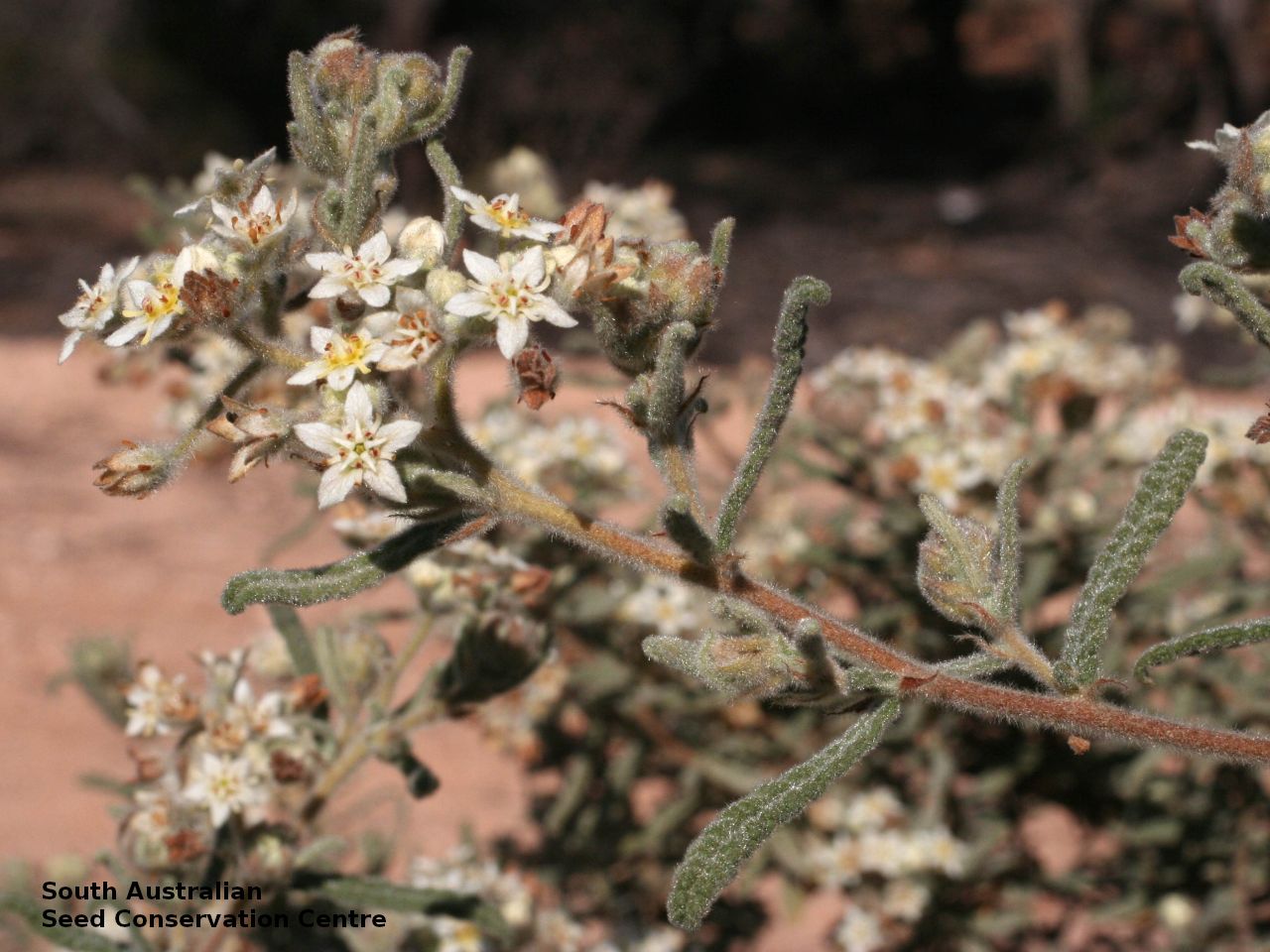
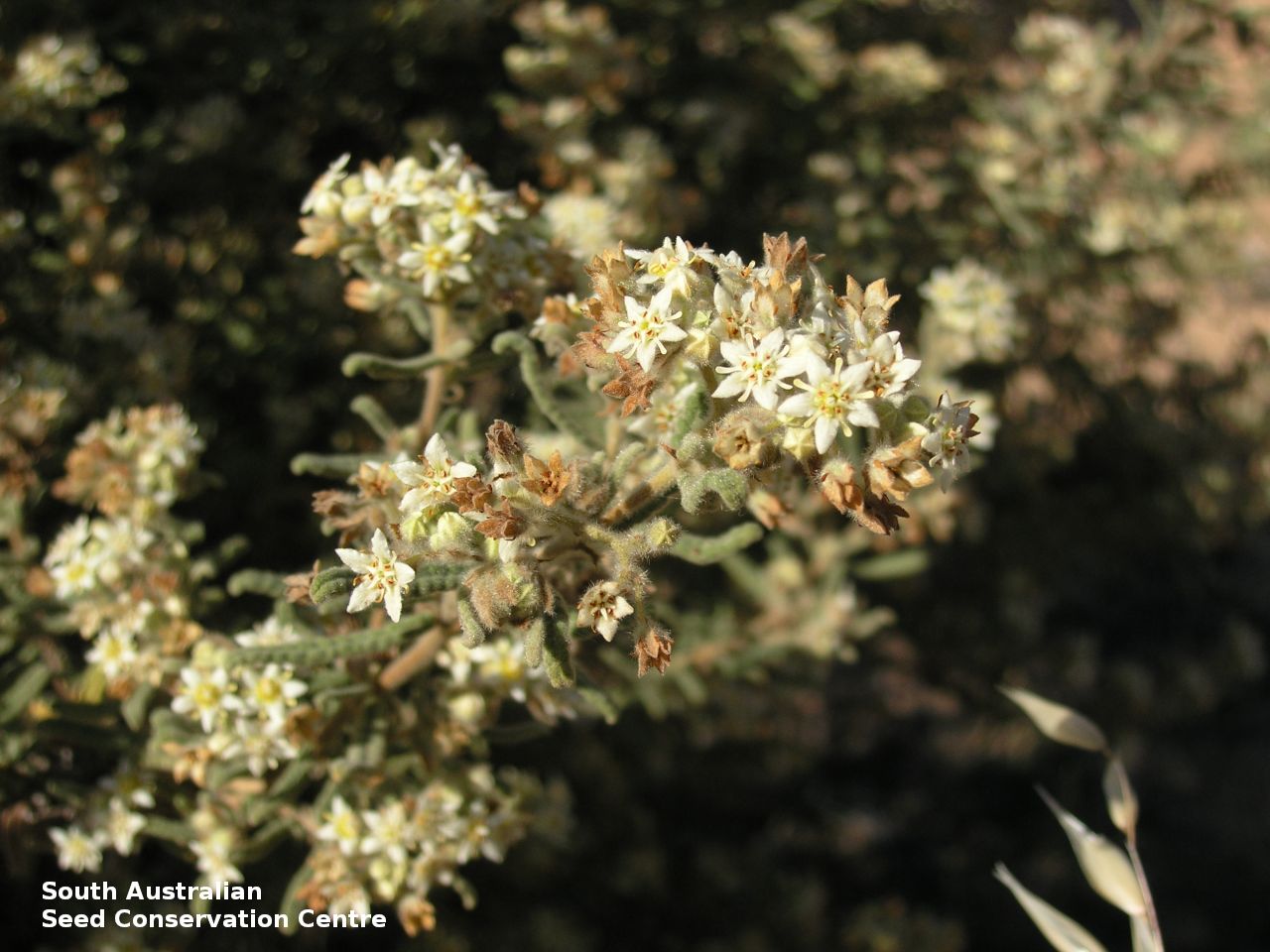
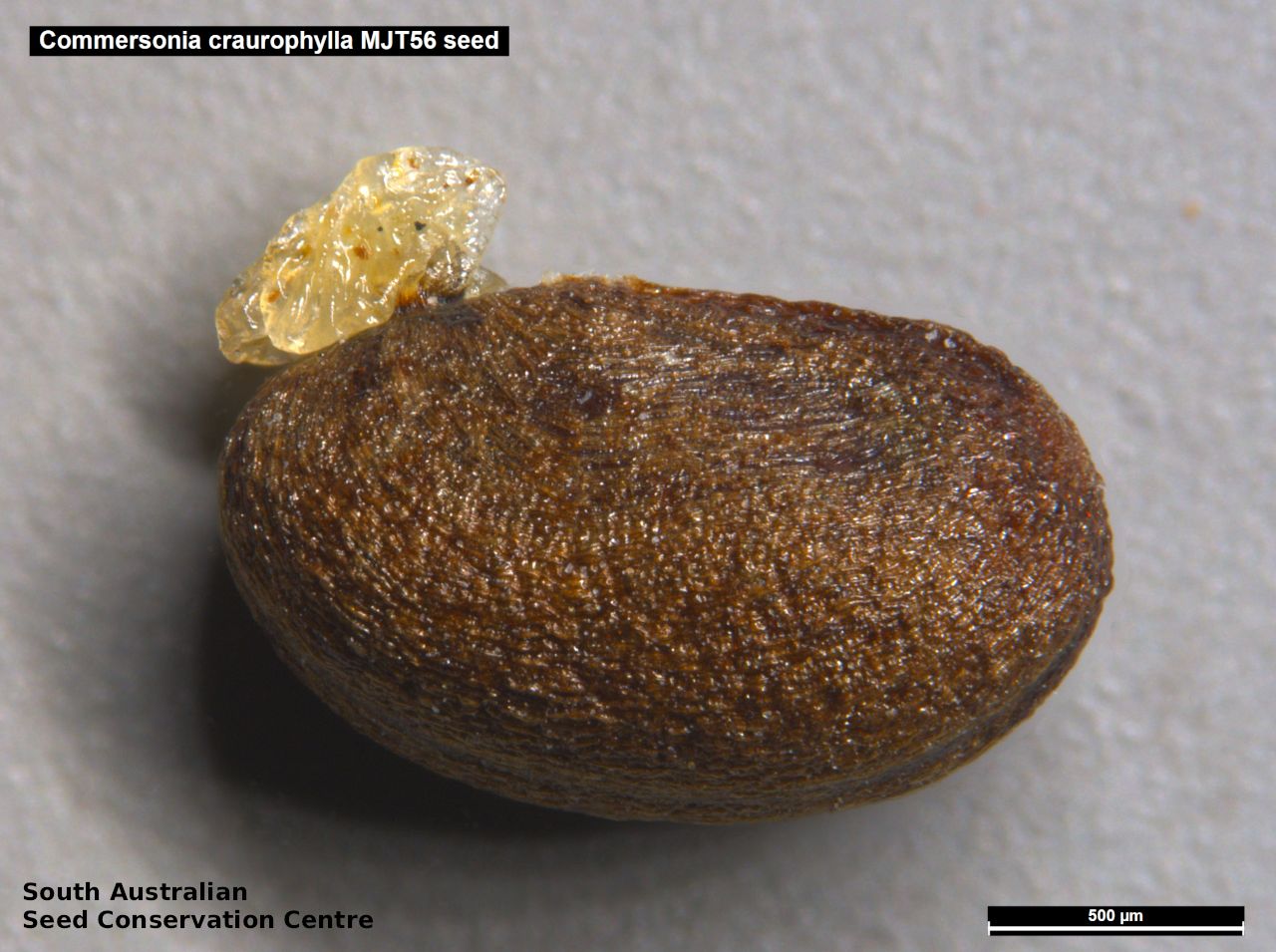
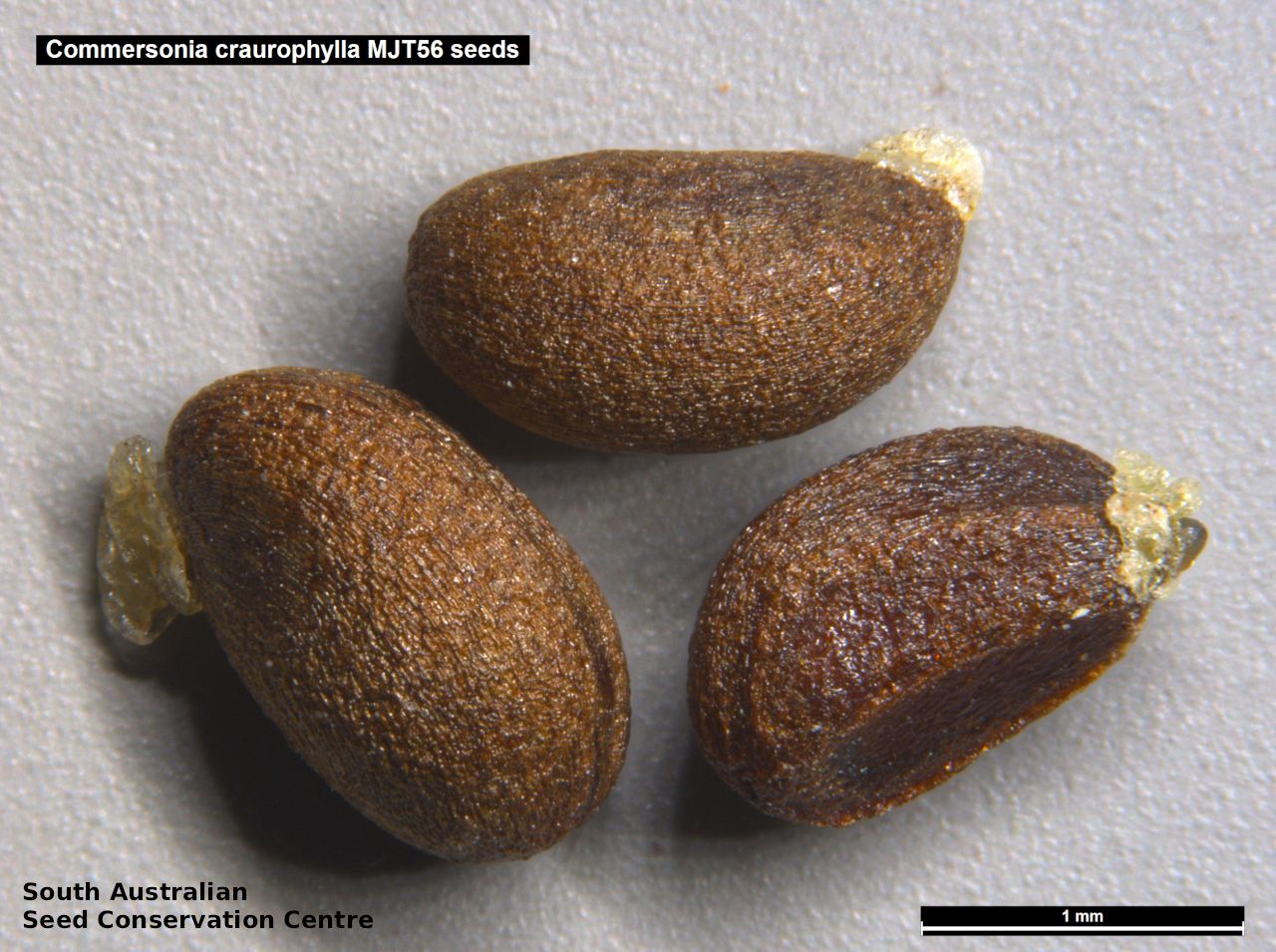

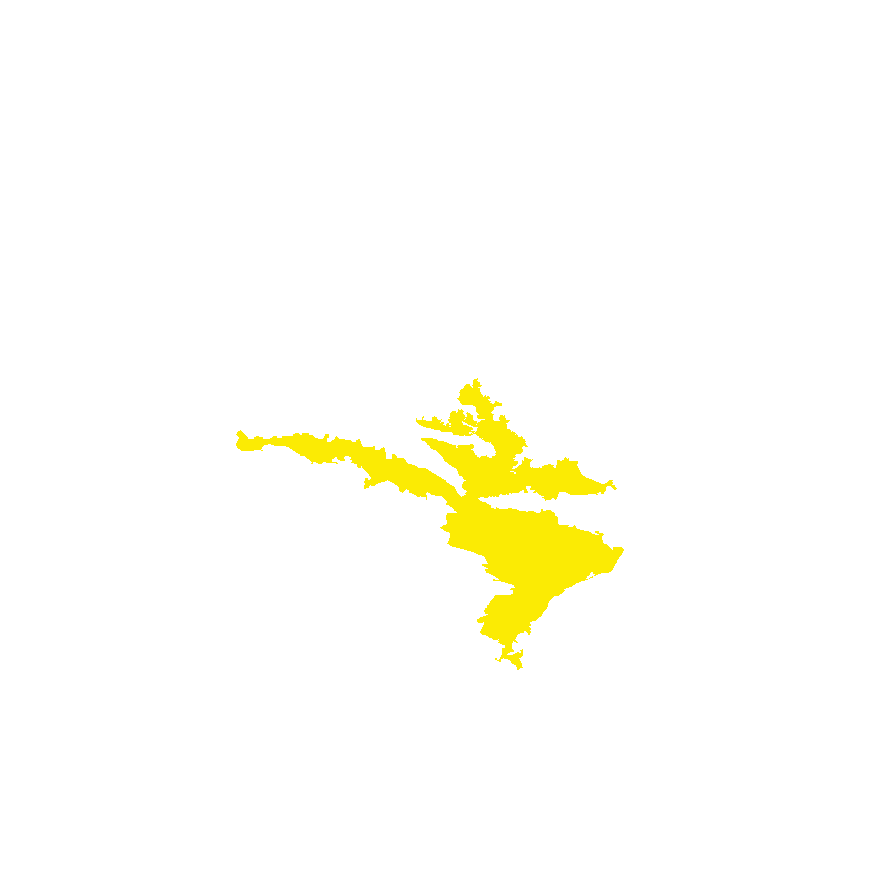
Prior names
Rulingia craurophylla
Common names
Brittle Leaved Rulingia
Brittle-leaf Rulingia
Etymology
Commersonia named after Philibert Commerson (1727-1773), a French naturalist best known for accompanying Louis Antoine de Bougainville on his voyage of circumnavigation in 1766–1769. Craurophylla possible means brittle leaf.
Distribution and status
Found scattered on the upper Eyre Peninsula growing on sandy loam over limestone in mallee. Also found in Western Australia. Native. Very rare in South Australia but can be more common post fire. Common in Western Australia.
Herbarium region: Eyre Peninsula
AVH map: SA distribution map (external link)
Plant description
Shrubs to 2 m high and often broader than high, with branches covered in dense stellate hairs. Leaves linear-oblong, rigid, with a deeply impressed midrib and secondary veins, with recurved or revolute margins; densely hairy on both surfaces, to 40 mm long and 5 mm wide. Inflorescences in dense short panicles with 20 white flowers. Flowering between August and October. Fruits are hairy brown globular capsule to 5 mm diameter, splitting when mature and containing numerous seeds. Seeds are small brown ovoid seed to 1.8 mm long and 1 mm wide, with fine wrinkled surface. Seed embryo type is spatulate.
Seed collection and propagation
Collect seeds between October and December. Capsules can be collected prior to splitting, as long as the seeds inside are hard and brown. Place the capsules in a tray and leave to dry for at least a week. Rub the dried capsules by hand to dislodge the seeds. Use a sieve to separate the unwanted material. Store the seeds with a dessicant such as dried silica beads or dry rice in an air tight container in a cool and dry place. From one collection, the seed viability was high, at 85%.
| Location | No. of seeds (weight grams) | Number of plants | Date collected | Collection number Collection location | Date stored | % Viability | Storage temperature |
|---|---|---|---|---|---|---|---|
| BGA | 2,790 (2.17 g) | 1 | 16-Oct-2007 | MJT56 Eyre Peninsula | 19-Sep-2008 | 85% | +5°C, -18°C |
| BGA | 15,300 (15.000 g) | 30 | 25-Nov-2020 | TST1453 Eyre Peninsula | 28-Jun-2021 | 95% | -18°C, -80°C |
| BGA | 10,300 (9.531 g) | 30 | 25-Nov-2020 | TST1453 Eyre Peninsula | 7-Jul-2022 | 94% | -18°C, -80°C |
| BGA | 103,600 (99.228 g) | 20 | 12-Dec-2022 | TST1453 Eyre Peninsula | 20-Jun-2023 | 100% | -18°C, -80°C |
Number of plants: This is the number of plants from which the seeds were collected.
Collection location: The Herbarium of South Australia's region name.
% Viability: Percentage of filled healthy seeds determined by a cut test or x-ray.